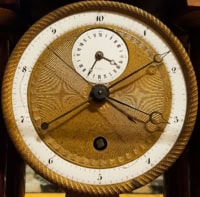Two physicists in China have shown that it should be possible to observe negative refraction with sound waves. Xiangdong Zhang of Beijing Normal University and Zhengyou Liu of Wuhan University have used computer simulations to design two-dimensional phononic crystals that behave like the "left-handed" optical materials that are able to negatively refract light (Appl. Phys. Lett. 85 341). They believe that the phenomenon could lead to applications in acoustics, seismology and ultrasonics.
First proposed over thirty years ago, negative index materials bend light in the opposite direction to ordinary materials. However, they were only demonstrated experimentally in 2000. Now, Zhang and Liu have shown that negative refraction is also possible with sound waves.
A phononic or sonic crystal is the acoustic equivalent of a photonic crystal — a material that contains a periodic arrangement of air-filled voids that have a lower refractive index than the host material. It is the periodic variation of the refractive index that creates an optical band gap in the photonic crystal, which means that only certain wavelengths of light are able to pass through it. Similarly, phononic crystals — which consist of cylinders of one material embedded in a different background medium — contain acoustic gaps, which means that only certain wavelengths of sound can pass through the material.
Zhang and Liu showed that negative acoustic refraction should occur in two systems: steel cylinders in an air background, and water cylinders in a mercury background. Moreover, they also have designed a two-dimensional acoustic “superlens” that should — like its optical equivalent — be capable of sub-wavelength resolution and reflection-free operation. The Chinese team believes that its acoustic system will offer similar advantages.
“Extensive applications of such a phenomenon to acoustic devices are anticipated,” Zhang told PhysicsWeb. “It is well known that acoustic devices that focus and image sound waves are very important for medical, military and civilian applications”.



